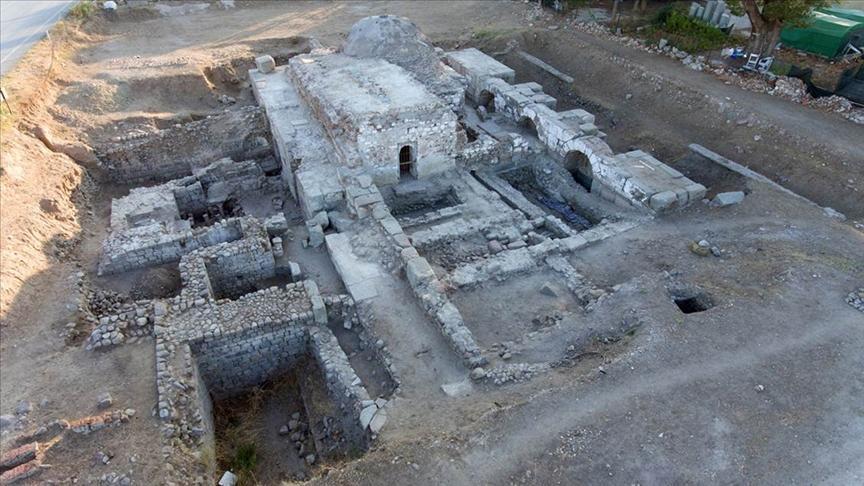
The results of a project on life in the ancient city of Pergamon (today’s Bergama), which is on the UNESCO World Heritage List, 1,800 years ago have been presented to the international archaeological community through the New York University Institute for the Study of the Ancient World (ISAW).
Speaking to state-run Anadolu Agency, German Archeology Institute Director Professor Felix Pirson said the project they carried out in Bergama with the permission of the Culture and Tourism Ministry was named after “Galen,” a famous Greek medical doctor, scientist and philosopher from Pergamon who lived 1,800 years ago.
Stating that they investigated the details of life in the 2nd and 3rd centuries A.D. and benefited from Galen’s writings and excavation results, Pirson said that they studied the relationship between the city center and the countryside, trade, food and water supply in Hellenistic and Roman periods.
Explaining that they announced the results to the world with a presentation at ISAW, Pirson said, “How did the people living at that time eat, and where did food and water come from? These questions are still valid today for big cities such as Ankara, Istanbul and İzmir. We studied the relationship between Pergamon and its surroundings. It is thought that 180,000 people lived in that area. We compared the information we got from Galen with the results of our archaeological excavations. We realized that Pergamon center was small in terms of providing resources to this population. We think that foods such as cheese and honey were produced by farmers in other regions and taken to the center.”
Noting that the resource problems of the past and the present are similar, Pirson said, “The scope of archeology is not just to reveal wonderful structures or mosaics. It is also done to better understand today and find solutions to problems. Pergamon is an important example for us in this sense. It provides us with important evidence from 1,800 years ago. We also have hope that we will reach more interesting results.”
Pirson added that he thinks that Pergamon’s central and rural area is an interesting area with good resources to live in given the conditions of the period.
Project results
The project, which is carried out by Turkish and German experts, provides information about the Temple of Athena, the importance of Zeus Altar structures, the relationships between social classes, and daily living conditions.
The project presents data about the diseases, diet patterns and treatments of the period, according to samples taken from skeletons unearthed during the excavations.
The effect of thermal baths in Pergamon 1,800 years ago on today’s treatment methods is also emphasized in the project.
Details of the luxurious lives of the elites in the 2nd and 3rd centuries are also among the results of the project.
ISAW also held a lecture with an exhibition for the entire archeology world through the internet on April 22.
In the lecture, given by Pirson, Galen’s innovations to the medical world, philosophical aspect, books and living conditions in ancient times were explained.
Also, pictures, informative notes and audio narratives about the period were also presented in an exhibition.